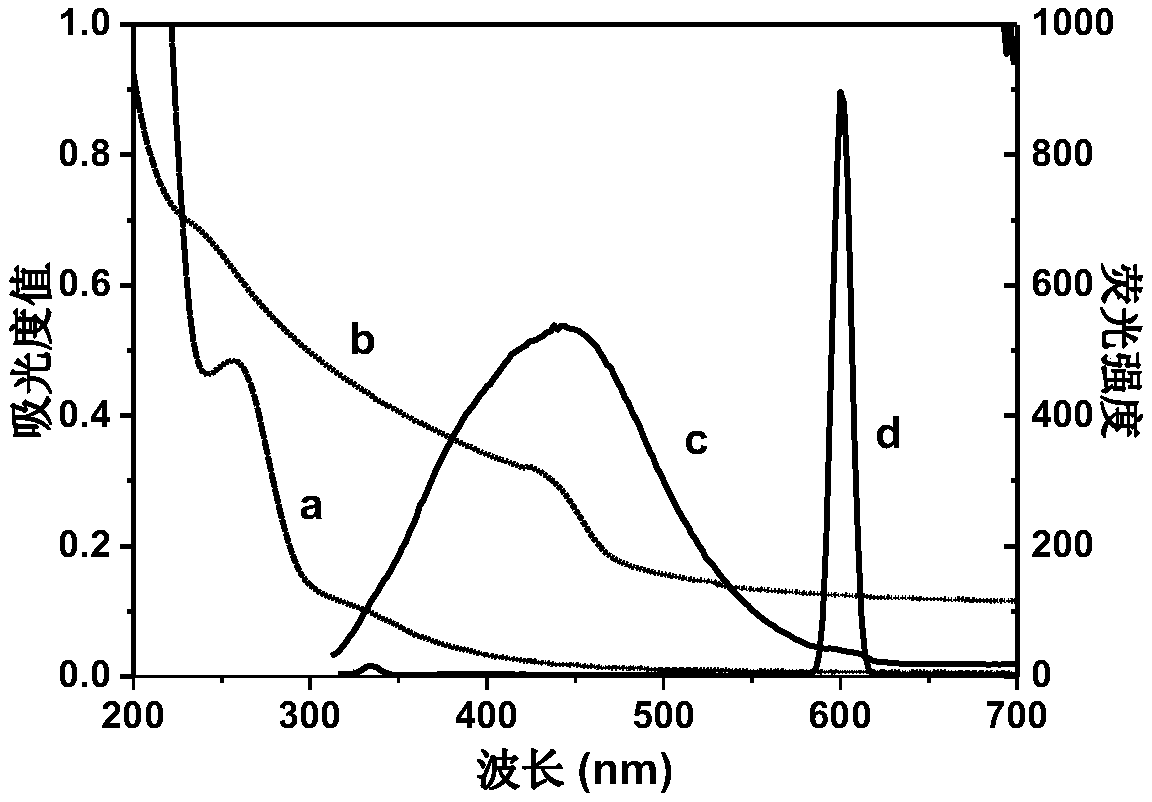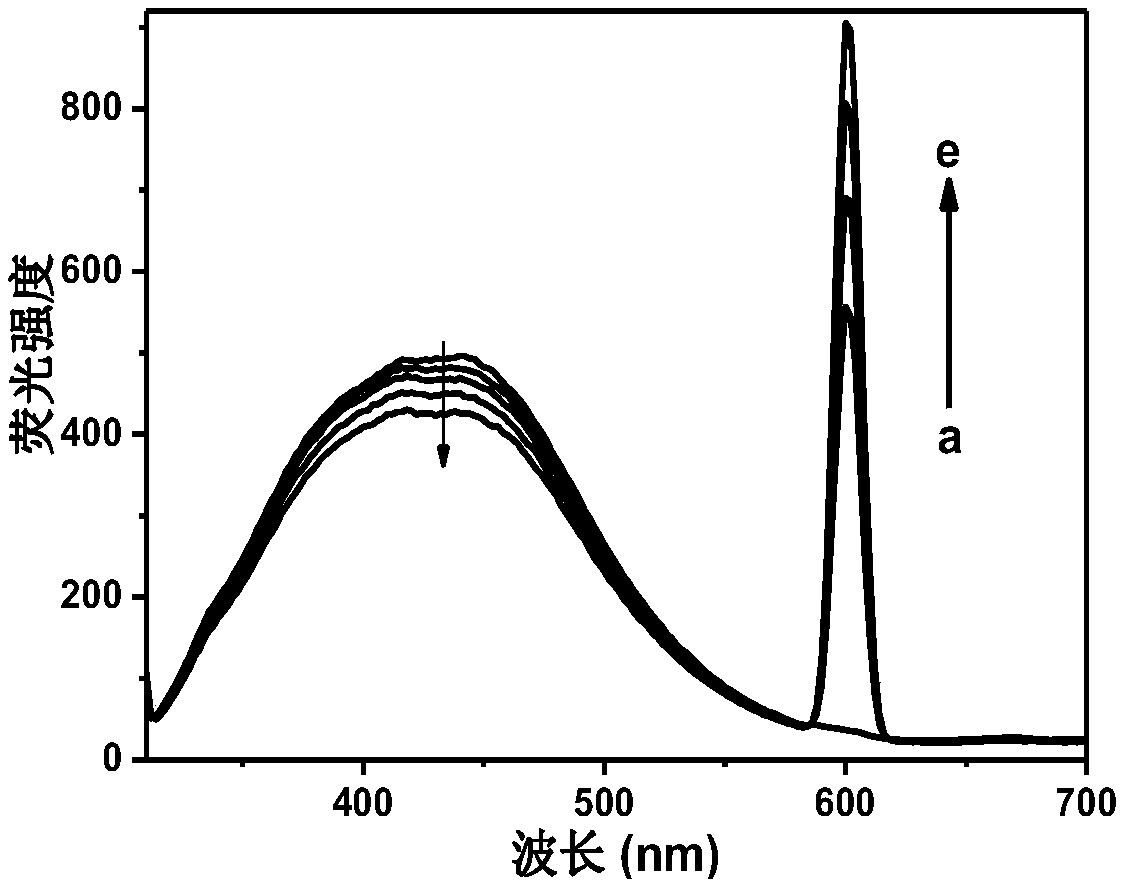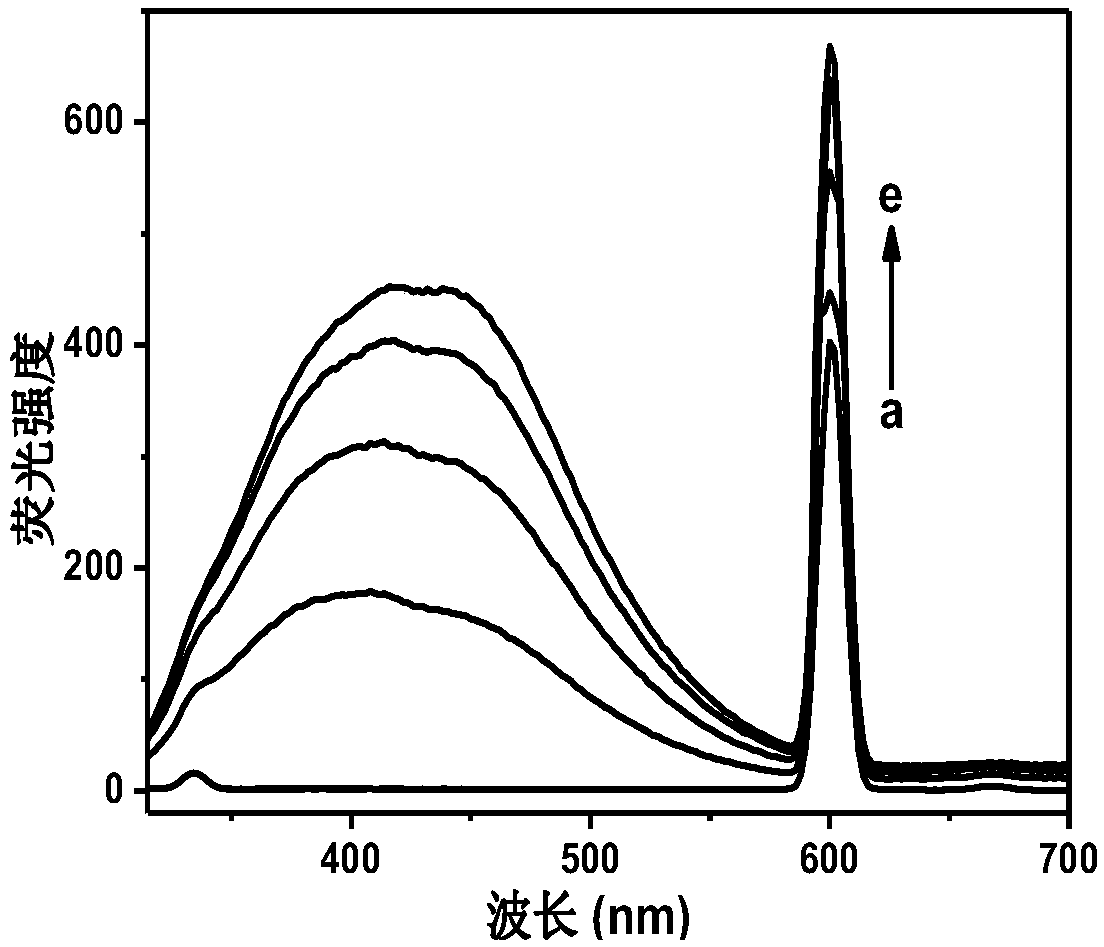Method for detecting nicotine based on fluorescence resonance energy transfer
A technology of nicotine and fluorescence intensity, applied in the direction of fluorescence/phosphorescence, material excitation analysis, etc., can solve the problems of poor selectivity and low sensitivity, and achieve the effect of simple instrument, simple operation method and simple operation.
- Summary
- Abstract
- Description
- Claims
- Application Information
AI Technical Summary
Problems solved by technology
Method used
Image
Examples
Embodiment 1
[0036] Embodiment 1: the determination of nicotine in cigarette sample
[0037] 1. Preparation of water-soluble carbon quantum dot solution: Weigh 10.0g of polyethyleneimine liquid into 90mL of ultrapure water, sonicate for 5 minutes to make it fully mixed, and transfer to a polytetrafluoroethylene reaction kettle, heat at 200°C After cooling down to room temperature naturally for 5 hours, filter with a filter membrane with a pore size of 0.22 μm, and then perform dialysis treatment with a dialysis bag with a molecular weight cut-off of 3500D for 24 hours to obtain a water-soluble carbon quantum dot solution.
[0038] 2. Preparation of water-soluble metal quantum dot solution: 50mL 0.01mol / L CdCl 2 Add the solution and 250 μL of thioglycolic acid into a 250 mL three-neck flask, mix well under magnetic stirring, slowly add 1.0 mol / L NaOH to adjust the pH to 11, and 2 After stirring for 30min under protection to remove the oxygen in the mixture, add 5mL of 0.1mol / L Na 2 S·9H ...
Embodiment 2
[0042] Example 2 Determination of Nicotine in Electronic Cigarette Liquid
[0043] 1. Preparation of water-soluble carbon quantum dots: same as in Example 1.
[0044] 2. Preparation of water-soluble metal quantum dots: same as in Example 1.
[0045] 3. Preparation of nicotine working curve: Transfer 0.5mL of 1, 20, 40, 60, 80, 100mg / L nicotine standard solution to a 10mL stoppered colorimetric tube, and add 30μL of the water-soluble metal obtained in step 2 in sequence Quantum dot solution, 70 μL of the water-soluble carbon quantum dot solution obtained in step 1, diluted to the mark with a pH 6.0 phosphate buffer solution, shaken well, and left to stand for 8 minutes, with 300nm as the excitation wavelength, the excitation and emission slits are both 5nm, at Fluorescence intensity measured at 600nm, the regression equation (F-F 0 ) / F 0 =0.0298C(μg / mL)+0.0301, correlation coefficient r=0.9990, where F and F 0 Represent the fluorescence intensity of metal quantum dots in th...
Embodiment 3
[0048] The mensuration of nicotine in the tobacco leaf sample of embodiment 3
[0049] 1. Preparation of water-soluble carbon quantum dots: same as in Example 1.
[0050] 2. Preparation of water-soluble metal quantum dots: same as in Example 1.
[0051] 3. Preparation of nicotine working curve: Transfer 0.5mL of 1, 20, 40, 60, 80, 100mg / L nicotine standard solution to a 10mL stoppered colorimetric tube, and add 40μL of the water-soluble metal obtained in step 2 in sequence Quantum dot solution, 80 μL of the water-soluble carbon quantum dot solution obtained in step 1, diluted to the mark with a pH 6.0 phosphate buffer solution, shaken well, and left to stand for 10 min, with 300 nm as the excitation wavelength, the excitation and emission slits are both 5 nm, at Fluorescence intensity F measured at 600nm place, obtain regression equation (F-F 0 ) / F 0 =0.1203C(μg / mL)+0.1230, correlation coefficient r=0.9992, where F and F 0 Represent the fluorescence intensity of metal quan...
PUM
 Login to View More
Login to View More Abstract
Description
Claims
Application Information
 Login to View More
Login to View More - R&D
- Intellectual Property
- Life Sciences
- Materials
- Tech Scout
- Unparalleled Data Quality
- Higher Quality Content
- 60% Fewer Hallucinations
Browse by: Latest US Patents, China's latest patents, Technical Efficacy Thesaurus, Application Domain, Technology Topic, Popular Technical Reports.
© 2025 PatSnap. All rights reserved.Legal|Privacy policy|Modern Slavery Act Transparency Statement|Sitemap|About US| Contact US: help@patsnap.com



